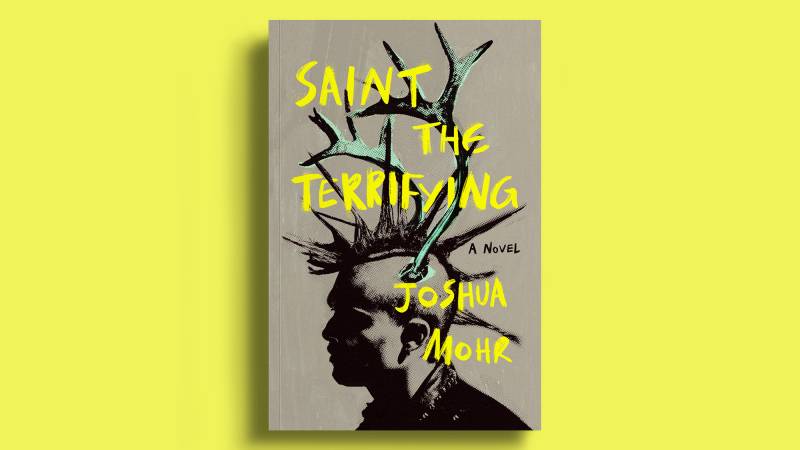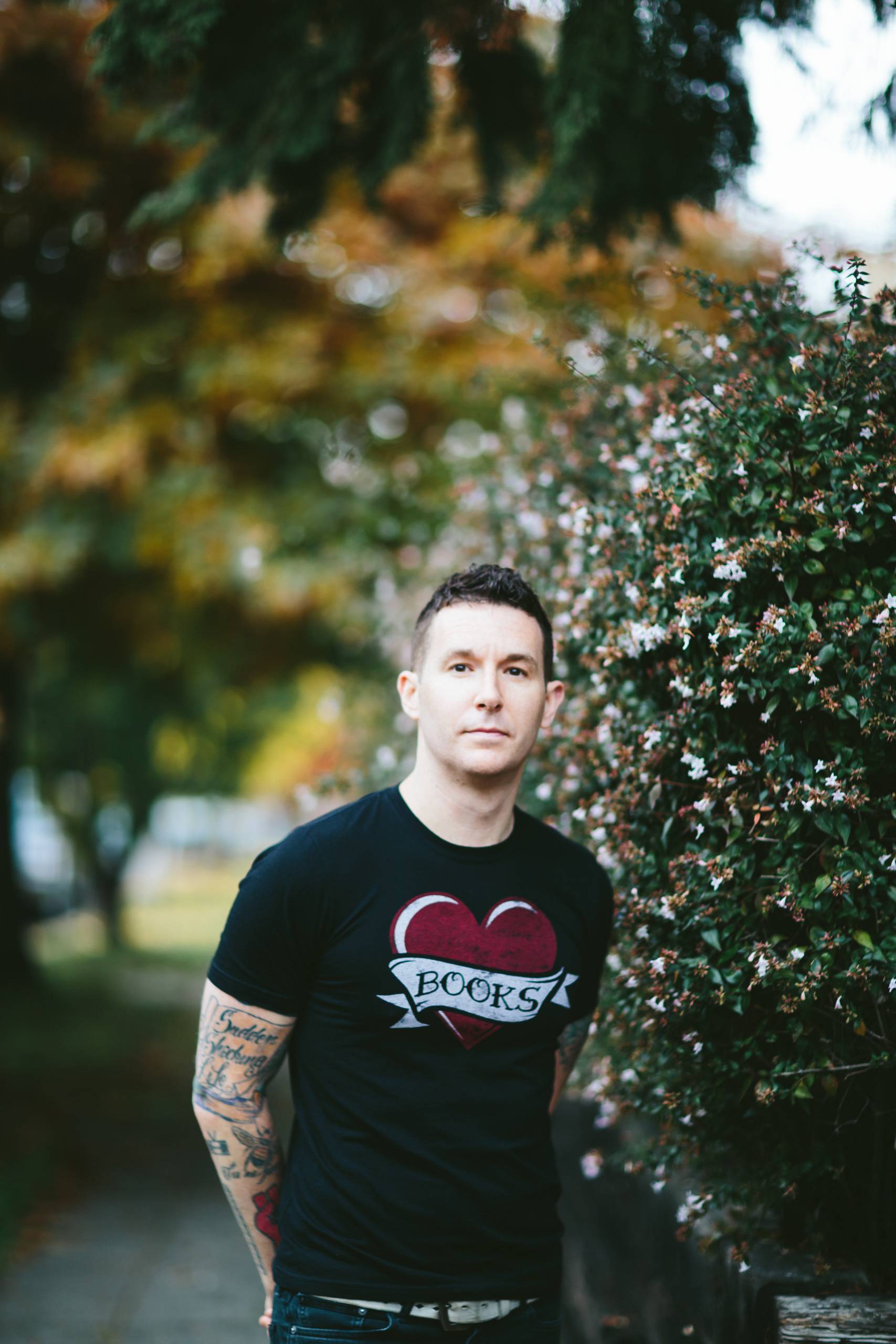At first glance there doesn’t seem to be room for overlap between a traditional hard-boiled detective story and the crucibles of a group of punks in West Oakland. But in Joshua Mohr’s new book, Saint the Terrifying, these two worlds collide head on, exploding across the page in glittering sentences that tell an eccentric and grimy vigilante story.
Saint the Terrifying has an unlikely origin story in a different music genre entirely. A friend contacted Mohr about contributing to an anthology of stories based on Taylor Swift songs, and Mohr, who has a 10-year-old Swift-loving daughter, jumped at the opportunity.
“I finished it and I was like, ‘This guy’s not done squawking in my ear,’” Mohr says over Zoom. A very different version of that first self-contained piece became chapter one of his new novel.
Further inspiration came to the author, who splits his time between San Francisco and Seattle, after a visit to Seattle’s National Nordic Museum. The trip prompted a deep dive into Viking mythology and Mohr, a “card-carrying nerd,” found himself 30-plus books deep into the lore.
“The cool thing about these books is it’s every possible genre,” he says excitedly. “It’s magical realism, it’s horror, love stories, fantasies. Whatever I wanted to throw in there, I could. It became this really beautiful blank canvas to really allow my imagination to leap down every rabbit hole I possibly could find.”



